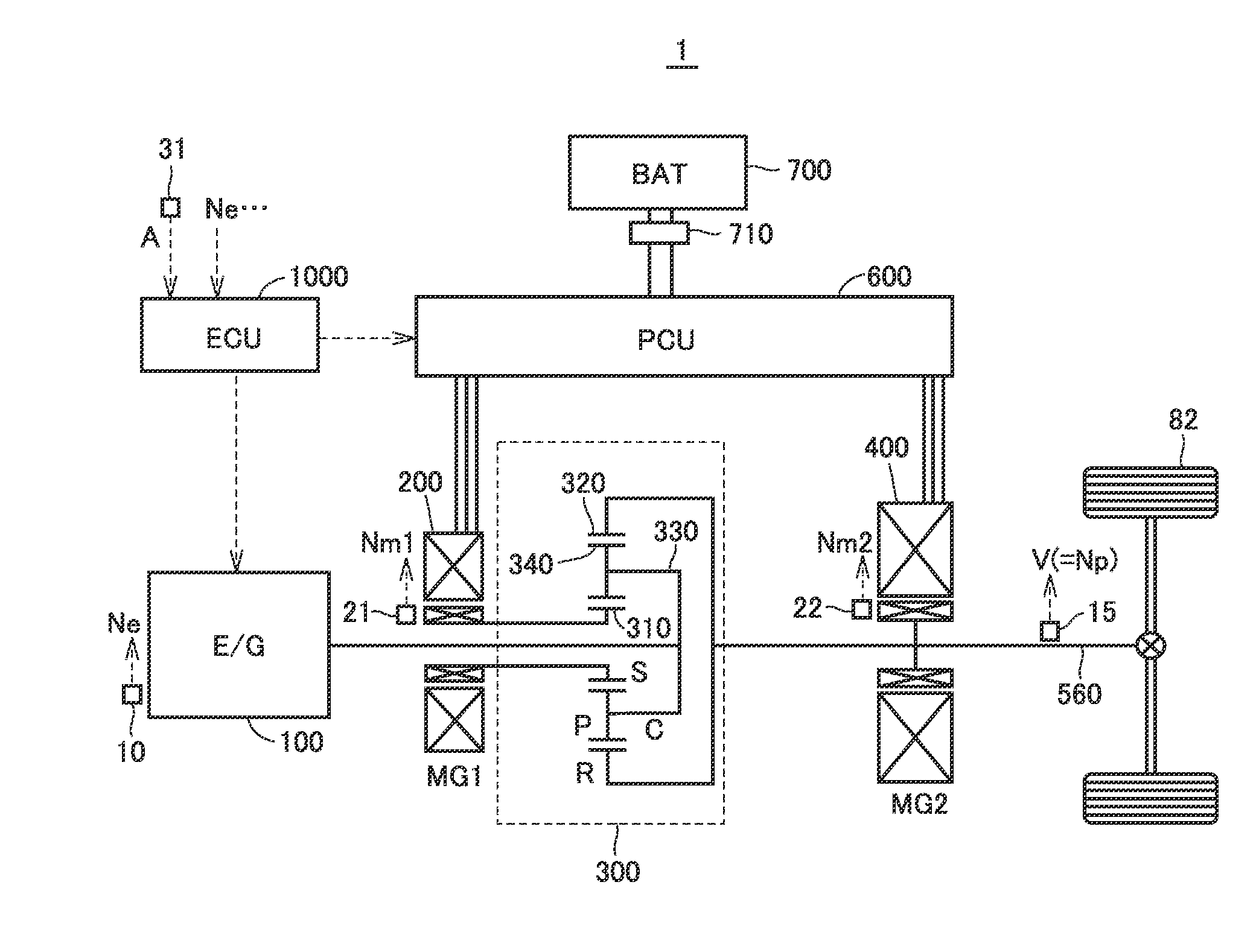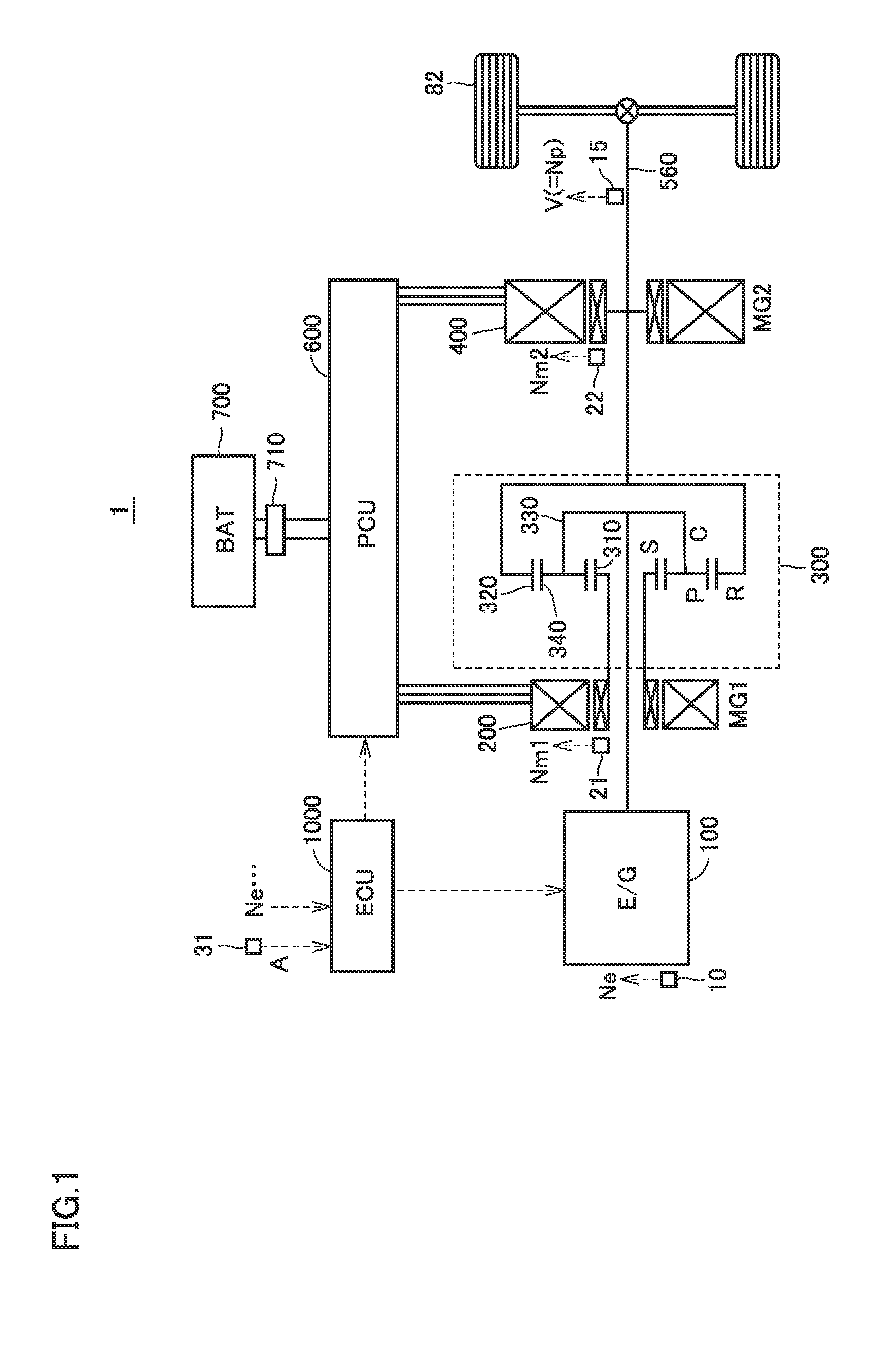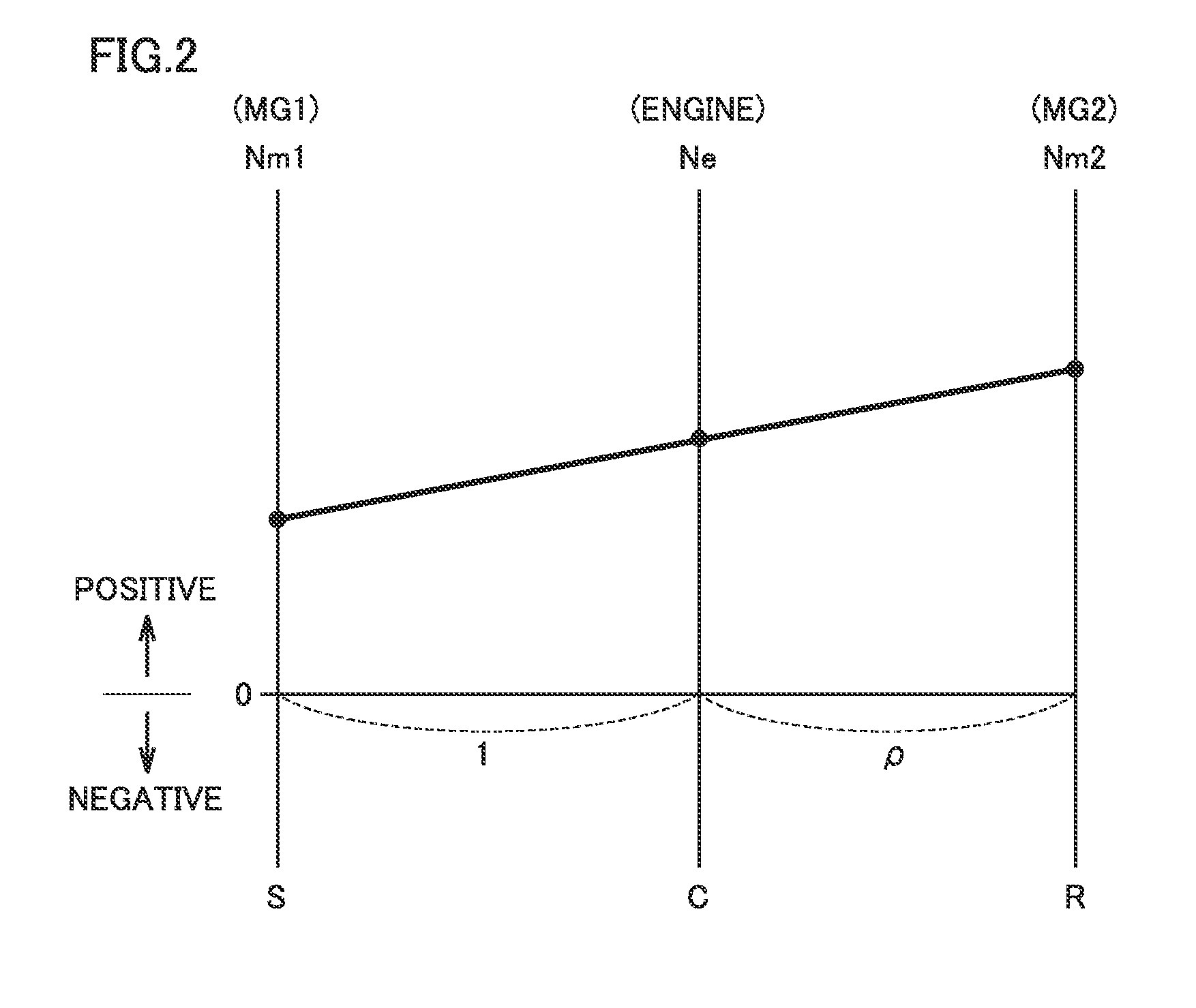Driving device for vehicle
a technology for driving devices and vehicles, applied in the direction of vehicle sub-unit features, propulsion using engine-driven generators, transportation and packaging, etc., can solve the problems of power balance control failure, etc., to prevent engine rotation speed drop, control accuracy is superior, and power balance control accuracy can be controlled accurately
- Summary
- Abstract
- Description
- Claims
- Application Information
AI Technical Summary
Benefits of technology
Problems solved by technology
Method used
Image
Examples
first embodiment
[0036]FIG. 1 is an overall block diagram of a vehicle 1 according to the present embodiment. Vehicle 1 includes an engine 100, a first MG (Motor Generator) 200, a power split device 300, a second MG 400, an output shaft 560, driving wheels 82, a PCU (Power Control Unit) 600, a battery 700, an SMR (System Main Relay) 710, and an ECU (Electronic Control Unit) 1000.
[0037]Engine 100 is an internal combustion engine that burns a fuel and outputs the motive power. Each of first MG 200 and second MG 400 is an AC rotating electric machine and functions both as a motor and a generator. Hereinafter, a rotation speed of engine 100 may be denoted as “engine rotation speed Ne”, a rotation speed of first MG 200 may be denoted as “first MG rotation speed Nm1”, and a rotation speed of second MG 400 may be denoted as “second MG rotation speed Nm2”. In addition, the torque of engine 100 may be denoted as “engine torque Te”, the torque of first MG 200 may be denoted as “first MG torque Tm1”, and the t...
second embodiment
[0118]In the first embodiment described above, a drop in engine rotation speed Ne has been prevented by restricting requested driving force Preq used for the power balance control, in a case where engine rotation speed Ne deviates to the side higher than target rotation speed Nereq during the batteryless travel control.
[0119]However, when requested driving force Preq is great, a drop in engine rotation speed Ne may be prevented by restricting the function of the engine F / B control (function of decreasing engine rotation speed Ne toward target rotation speed Nereq), instead of restricting requested driving force Preq, in order to satisfy the user's request.
[0120]As the specific process for restricting the function of the engine F / B control, at least one of a process for decreasing a feedback gain K and a process for increasing target rotation speed Nereq may be executed.
[0121]When the process for decreasing feedback gain K is executed, the speed of decrease in engine torque Te (throt...
third embodiment
[0127]In the second embodiment described above, a drop in engine rotation speed Ne has been prevented by restricting the function of the engine F / B control in a case where engine rotation speed Ne deviates to the side higher than target rotation speed Nereq during the batteryless travel control.
[0128]However, when engine rotation speed Ne remains at a high value by restricting the function of the engine F / B control, first MG rotation speed Nm1 may also remain at a high value based on the relation on the nomographic chart of power split device 300. When first MG rotation speed Nm1 is high, it is concerned that the control mode of first MG 200 becomes the rectangular wave control mode that is inferior in control accuracy to the PWM control mode (see FIG. 5 described above), and the first MG generation power cannot be accurately matched with the second MG discharge power, which leads to a break of the power balance.
[0129]Thus, in a third embodiment, based on whether or not the control ...
PUM
 Login to View More
Login to View More Abstract
Description
Claims
Application Information
 Login to View More
Login to View More - R&D
- Intellectual Property
- Life Sciences
- Materials
- Tech Scout
- Unparalleled Data Quality
- Higher Quality Content
- 60% Fewer Hallucinations
Browse by: Latest US Patents, China's latest patents, Technical Efficacy Thesaurus, Application Domain, Technology Topic, Popular Technical Reports.
© 2025 PatSnap. All rights reserved.Legal|Privacy policy|Modern Slavery Act Transparency Statement|Sitemap|About US| Contact US: help@patsnap.com



